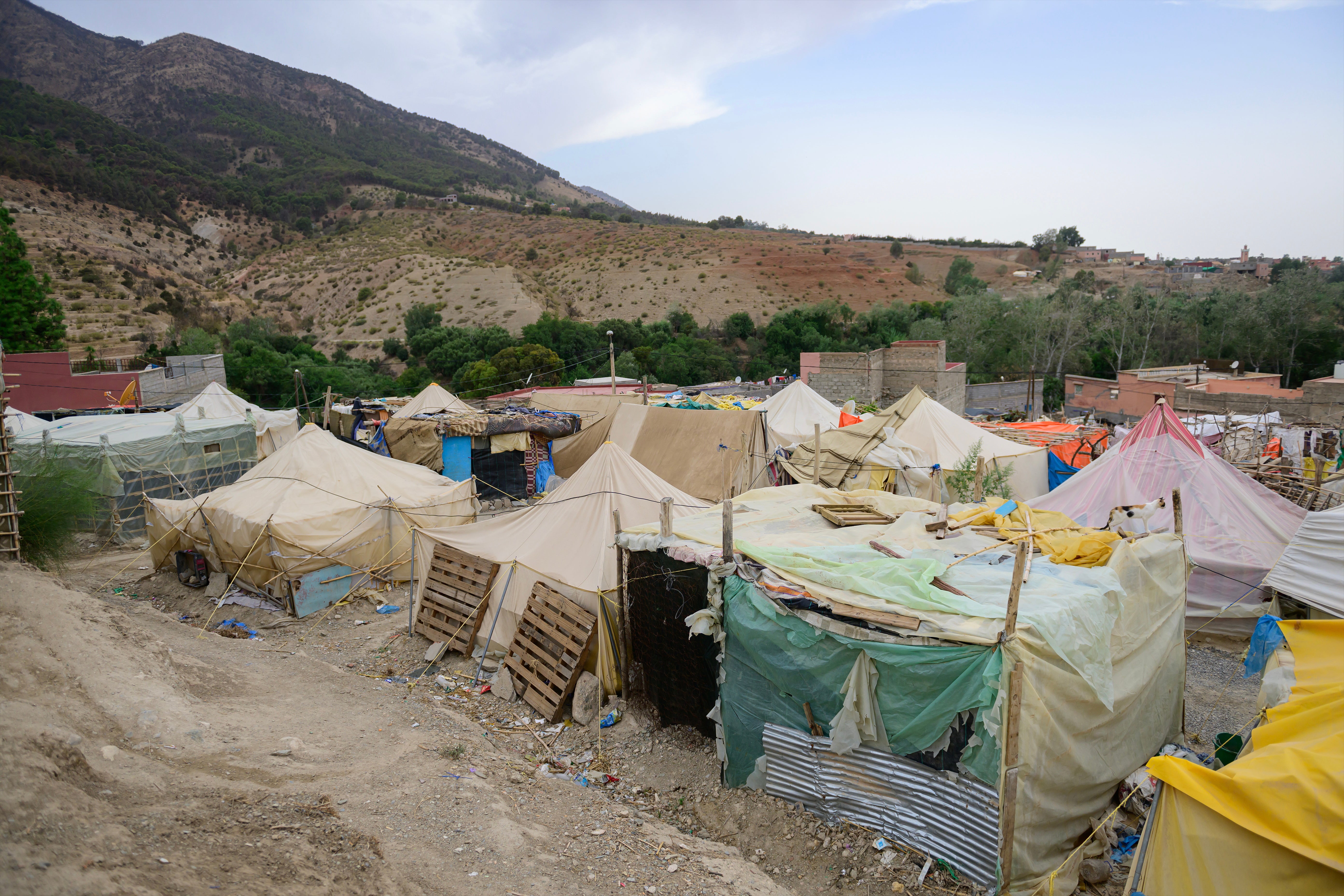One year after a magnitude 6.8 earthquake took the lives of 3,000 people in Morocco and left thousands more homeless, destruction is still evident in communities throughout the High Atlas Mountains.
In remote agricultural villages where access is limited to uneven, poorly maintained mountain roads, flattened buildings have been swept into piles of rubble while local people await for the promised government support to rebuild their homes.
The plastic tents that were widespread in the region in the immediate aftermath of the quake have become semi-permanent homes to many families. Others have moved back into cracked and damaged buildings or started to reconstruct their homes themselves using what resources they can find. Some have left the area altogether and moved to larger towns and cities.

More than 55,000 homes were destroyed by the earthquake that struck late at night on 8 September 2023, with the epicentre in Al-Haouz province in the heart of the Atlas Mountains.
Tremors were felt across Morocco, but it was in the High Atlas where the destruction was most devastating, with many of the traditional clay buildings completely crumbling to the ground, leaving hundreds of thousands homeless and housed in tent camps.
Read more: Why the Ouirgane Valley should be your next short break
When Associated Press reporters re-visited some of the most impoverished and hard-to-reach villages in the days before the anniversary of the earthquake last week, residents said they were still waiting for funds for reconstruction and the approval of blueprints.
In Imi N’tala where the majority of buildings were destroyed and dozens of people lost their lives, the village looks much the same as it did in the immediate aftermath of the quake. The towns of Amizmiz and Moulay Brahim are swept of debris, but mounds of rubble and bricks remain. Homes that weren’t completely destroyed are cracked and damaged.

Youssef Id Boullite, a mountain guide from Aroumd in the Atlas Mountains, told The Independent that his home village was mostly back to normal with the…
Click Here to Read the Full Original Article at The Independent Travel…
